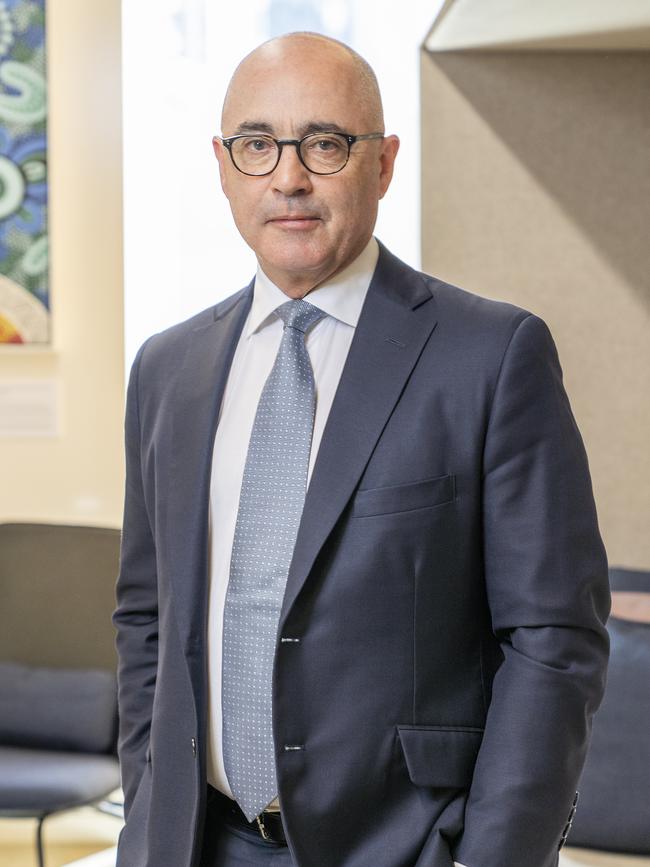Investors must adapt to a new era: Schroders
A US recession isn’t necessarily just around the corner, but stubbornly high inflation is set to underpin interest rates for the foreseeable future, according to Schroders.
A US recession isn’t necessarily just around the corner, but stubbornly high inflation is set to underpin interest rates for the foreseeable future, according to Schroders.
While the Fed took swift action to provide emergency funding during the US regional banking crisis in March, there’s a growing realisation that the post-GFC playbook, in which central banks cut interest rates at the first sign of market weakness, may not unfold as expected this time.
Schroders CEO and CIO Simon Doyle says investors will need to adapt their investment approach to this “new era” by being more selective and active in both their asset allocation and stock selection.
“I’d sort of characterise the world at the moment as being quite messy for a few reasons,” he says. “We’re seeing the end of a policy environment that was probably unsustainable.”
The inflationary consequences of the unprecedented fiscal and monetary policy stimulus unleashed to offset the crippling impact of lockdowns during the pandemic have been largely mitigated by the most aggressive lift in interest rates by Western central banks since the 1970s.
But Doyle also worries about inflationary risks from the structural trends of decarbonisation and deglobalisation, a “shift in the world order” in terms of geopolitical risks, and a broader trend of inequality which is “creating a lot of populist politics and political instability”.
These colliding forces have made the world “a pretty difficult place to interpret”.
The main takeaway is inflation is going to “stay higher for longer”, underpinning interest rates.

It comes after the US Federal Open Market Committee subtly acknowledged the recent 100 basis points lift in the 10-year US Treasury bond yield to a 16-year high near 5 per cent in the past few months was doing some of the Fed’s work in terms of curbing demand and inflation.
“Tighter financial and credit conditions for households and businesses are likely to weigh on economic activity, hiring, and inflation,” the FOMC said.
The cautious comment from the world’s most powerful central bank – together with weaker than expected US manufacturing data and a less onerous Treasury refunding schedule – caused a massive 17 basis point drop in the 10-year bond yield to 4.75 per cent.
That sparked a 1.1 per cent rise in the S&P 500, which helped lift Australia’s S&P/ASX 200.
However, the FOMC also noted that the extent of these effects “remains uncertain”.
In his press conference, Fed chair Jerome Powell said the FOMC was attentive to the increase in longer-term yields, but conceded that tighter conditions are not yet sufficient to “finish the job”. Powell said the FOMC was “proceeding carefully”, the key question was “should we hike more” and that evidence of above potential growth could warrant another rate hike.
Given the structural forces underpinning inflation, Schroders’ view is that it will take “a lot of hard work” by central banks” – sustained higher interest rates – to suppress demand enough to achieve their inflation targets as they were largely able to do in recent decades.
“We’ve been operating in a world for a long time where when things started to weaken, central banks would step in, provide liquidity, markets would go up, economies would sort of hold together,” Doyle says. “Inflation means they can’t do that, and I think the world is starting to come to grips with the idea that (interest rates) … are not going to go back to those low levels and markets are going to need to adjust from a growth perspective.”
But despite a range of indicators suggesting the US could experience a recession in the next 12 months, it may not experience a sustained contraction in the overall level of economic activity.
“What we have found is a lot more resilience in the global economy, particularly in economies like the US where the response to Covid puts a lot of cash in the hands of consumers, building a lot of resilience in the US consumer,” Doyle says.
As the US inflation rate plunges below nominal wage growth, consumers overall are seeing real wage growth, which increases their purchasing power. At the same time, the Fed’s assessment of the excess savings of US households has been revised up.
At their current drawdown rate, US savings alone are now worth 3.7 percentage points of US GDP for the next 15 months, according to Schroders’ estimates.
Doyle says there’s “a lot more resilience in US households”.
In his view it’s “not that clear that we’re going to end up in recession”. But investors may face greater volatility, lower potential or “trend” growth, and greater uncertainty about the sources of growth in the years ahead.
Markets are “coming out of a period of overextended valuations, no interest rates, no one really worrying about the price of risk, and no one really worrying about the quality of earnings”.
This “liquidity story” is changing to one of significant interest rates and risk premiums.
But the opportunities for investors are now starting to grow.
“There’s value to be placed on good quality research at the asset allocation and the stock selection level, so active managers are starting to regain that sort of stronger position in terms of being an alpha story over a beta story,” Doyle says. “That’s also flowing through into asset allocation where being active is starting to matter again.”






To join the conversation, please log in. Don't have an account? Register
Join the conversation, you are commenting as Logout